
Ceat SportRad Tyres 5,000km Review, on KTM 390 Duke
- Oct 6, 2024
- Views : 1924

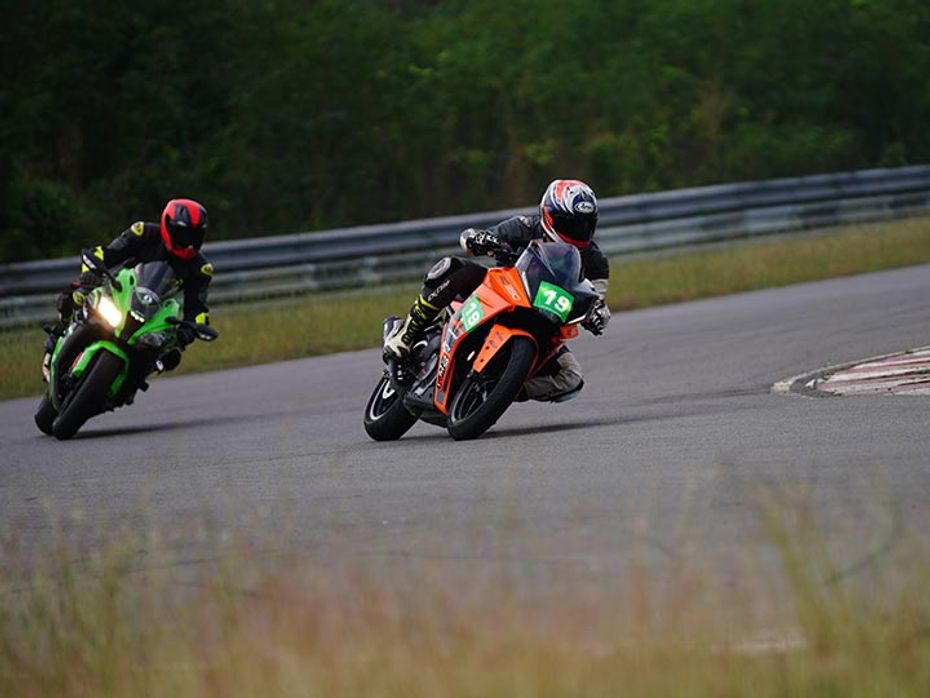
Photography: Aditya Bedre
I discovered the joy of sport riding motorcycles in the twisties over a decade and a half ago, and haven’t looked back since. Few things in life bring me more joy than riding a motorcycle fast around twists and turns. This love is what propelled me into a career as a motorcycle journalist and I’ve also had the opportunity to ride around India’s best race tracks as well. And while I don’t like to toot my own horn, I believe my experience has made me a decently fast rider. Now, I may not be “racer” fast, or among the fastest riders in the Indian automotive fraternity, but I’m fast enough to think that I’ve got it all, or at least most of it, figured out. But after spending a weekend at the California Superbike School (CSS) 2024, boy, was I wrong…
California Superbike School was founded by Keith Code in 1980 with the goal to help amateur and even experienced riders unlearn their “survival instincts” – essentially things riders do on their bikes which might feel “safe” or “right” but are actually counterproductive to riding effectively – and relearn the basics such as vision, suspension, grip and body position, and more. CSS has not only trained some world-class racers since its inception, but has also benefited the hundreds of Indian riders who have participated in it, since its inaugural session in India, in 2010. So this year, when ZigWheels had a chance to become a media partner and participate for a weekend, I naturally jumped at the opportunity.
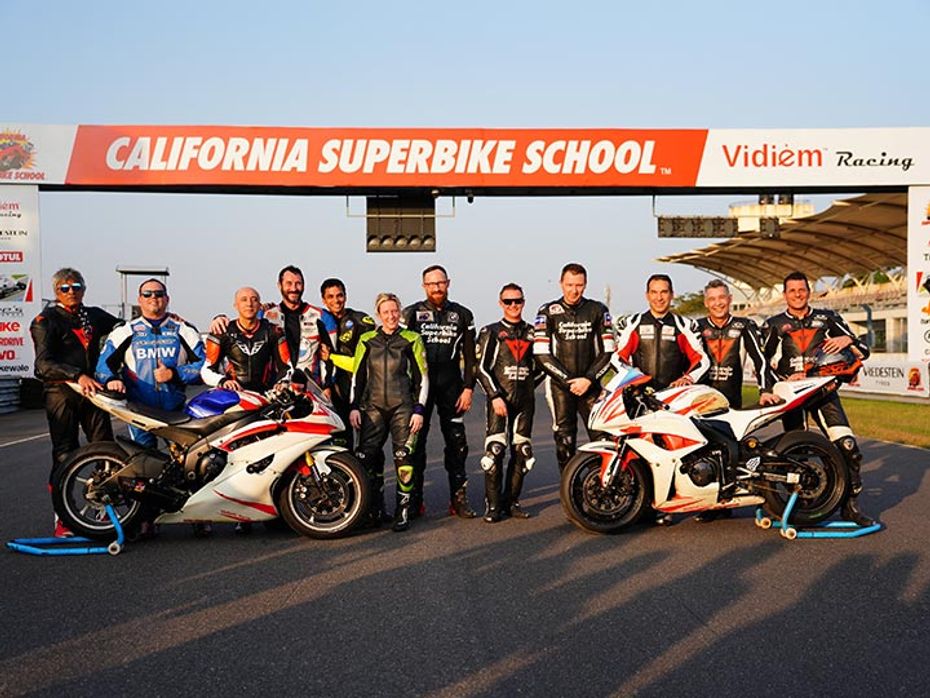
CSS is divided into two main courses. The first, Level 1, 2 & 3, is meant to teach all the basics right from steering, vision and body position. The other – Level 4 – is an advanced course for those who have already completed the first three levels and have specific aspects of their riding in mind they want to address. The latter is more suited for racers, while the first three levels are for beginners (or even returning riders). Since this was my first time at CSS, and since I’m no racer either, I enrolled for Levels 1, 2 & 3.
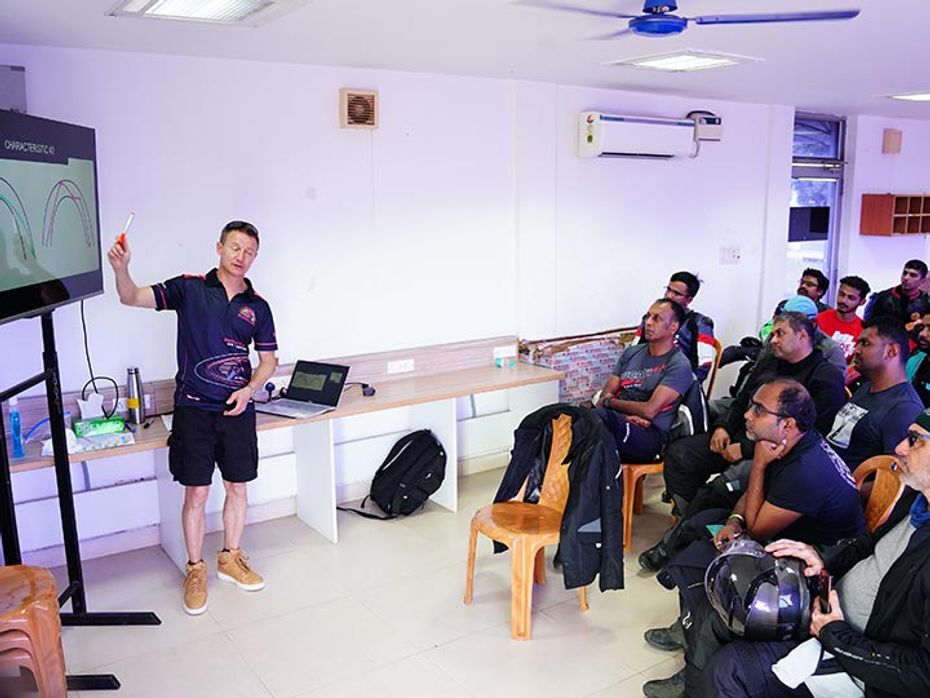
The format of the school is divided into three types of sessions: 20 minutes in the classroom for theory, 20 minutes on the track where you can implement things you learned in the classroom, and a debrief session with your on-track coach as soon as you’re back from your track session. Our classroom instructor for the weekend was Martin Plunkett, a veteran CSS coach from the UK. He did an excellent job of breaking down the theory for each session on a whiteboard and some top-notch on-bike videos which helped all the students visualise what needed to be done on the track. As for the on-track sessions, each track coach is assigned three riders per batch (with a total of three batches) for the weekend, and the coach ensures that he or she spends some laps riding behind you, evaluating how you’re going about your track drills, and some laps ahead of you, showing you the ropes. Each level (one for each day) consists of five classroom and five track sessions, for a total of 15 sessions over the entire weekend.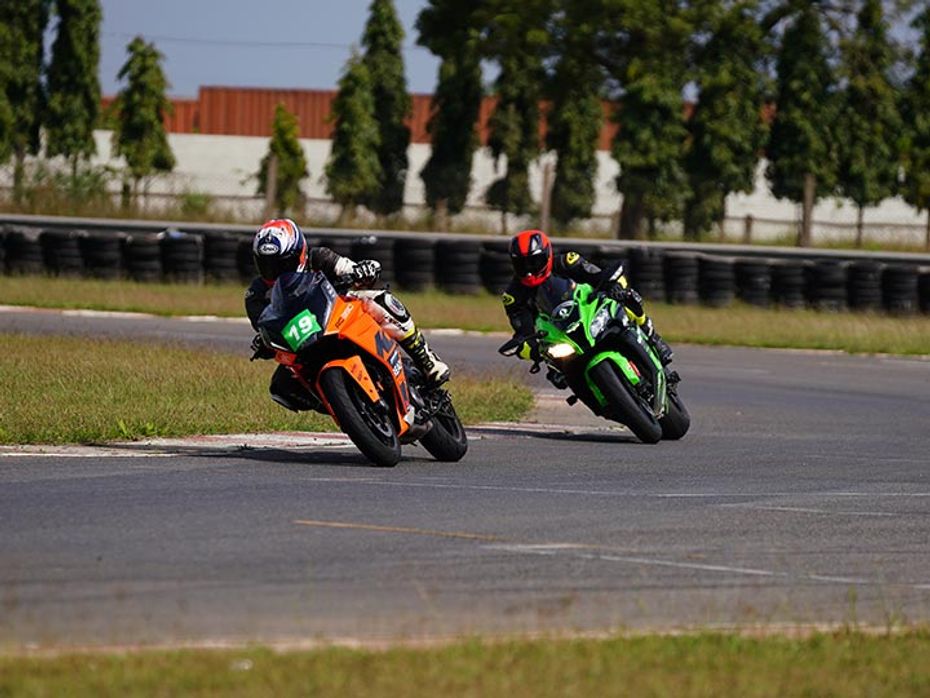
the automobile community
The very first thing they teach you at CSS is “Throttle Control.” The throttle and the brakes are two of the most important controls required to keep a motorcycle stable, and since using the brakes when the bike is leaned over into a corner can be disastrous if not done properly, correct throttle control is a must. To ensure that we focussed only on good throttle control during our track session, we were told to ride in just one gear, and without using the brakes. Taking the brakes away for the first session meant that we weren’t diving towards corners Kamikaze style, and that made us roll off the throttle earlier to get the bike at the right corner entry speed. But the key rule CSS taught us for going back on the gas was that once the throttle is opened, it has to be done in a “smooth, even and constant” manner throughout the remainder of the turn.
Following the throttle drills, we were taught Turn-in Points, figuring out exactly which point on the track to turn the bike into the corner so that you follow the correct line around the turn, and to make things a little easier, the coaches had put X marks in tape around the track at the optimal turn-in points. This lets students focus on turning the bike at the right time without having to spend too much of their attention hunting for the proper turn-in point. The next sessions included “Quick Steer” and “Rider Input”. The latter taught us how to give the right amount of input to the handlebar to steer the bike exactly as required, while the Quick Steering focussed on turning the bike quickly, so it remains leaned over for the shortest amount of time.
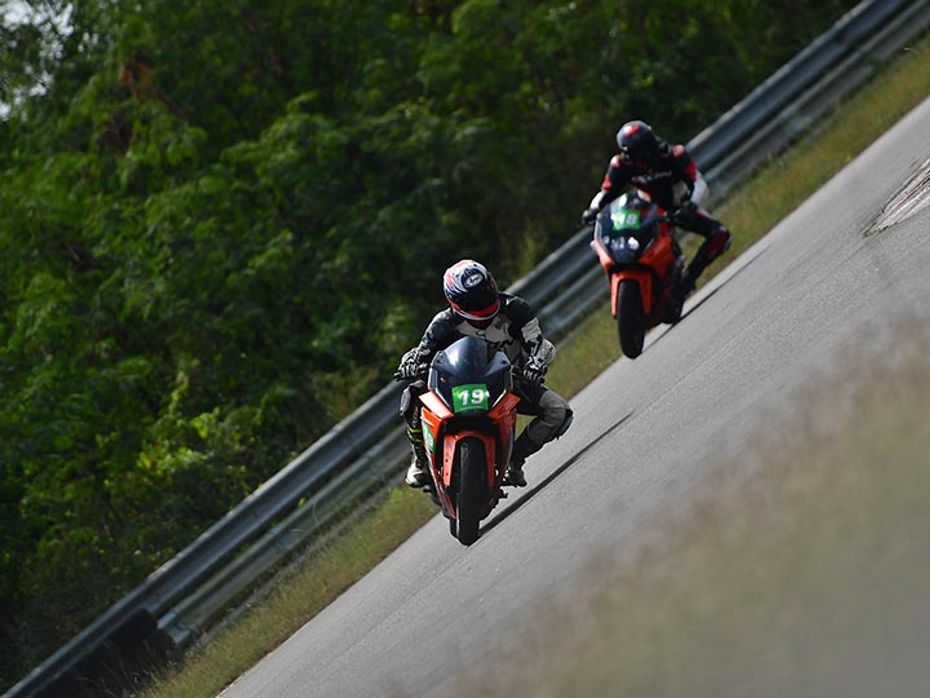
But the highlight for Level 1 was the “Two-Step” drill, which taught us to identify a corner’s turn-in point while we were still approaching it, allowing us to line the bike up with the turn-in point well in time, and get a fix on the apex of the turn before we started actually turning the bike. This vision drill is a critical process in getting the bike on the correct line from the turn point to the apex in one smooth action, without having to make any corrections to the bike once it is leaned over. And as we completed more sessions, we were allowed to use more controls (more gears and more brakes), so that we could start going faster and faster, but with more confidence as the speed gradually built up through the day.
Level 2 built on the foundations established in Level 1, and was primarily focused on vision. The first session was about finding all the right reference points around the circuit. While I have ridden at the Madras International Circuit multiple times in the past, I realised that there were quite a few corners where I didn’t have the right (or any) reference points at all, and would normally ride purely on feel. Here, we had to identify the turn-in point (thankfully marked on the track by the coaches), the apex and exit for each corner, and boy, was it an eye-opener!
And we needed our eyes open extra wide for the next drill, which was all about the “Wide View”. The Wide View is all about keeping your vision wide enough so that you get a better sense of speed and your location on the track before going into the corner. It helps plan for a better line through the corner without getting target fixated on anything, be it any of your reference points, or even fellow riders ahead of you. In the latter case, it even helps you plan better and safer overtakes, as you have a much better sense of exactly how much space you have and where you have it to make that pass.
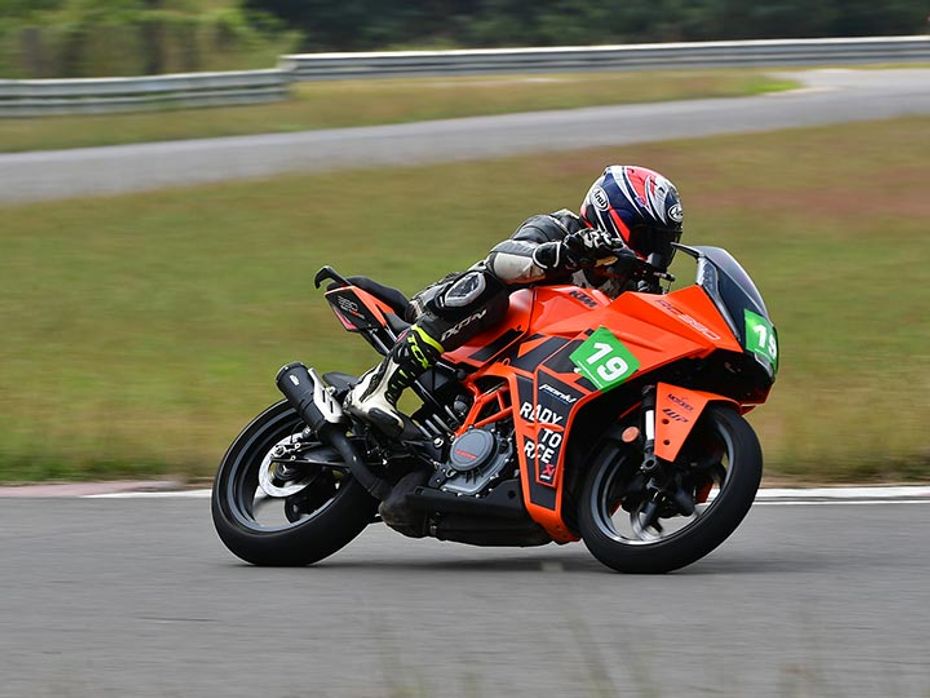
Following that, the “Two-Step” drill was expanded into the “Three-Step” drill, and this involved smoothly moving your eyes from one reference point to another using the Wide View. This helped not just me, but all my fellow students figure out the proper lines around each corner. Since we had visualised all three critical points of a corner beforehand (turn-in, apex and exit), we were smoother with our inputs and ended up feeling much more confident.
Level 2 ended with a braking drill, which taught us the right braking technique while entering corners. Heavy on the brakes when the bike is still upright and approaching the corner, and easing off as we approached the apex: basically trail braking. Trail braking is something I’ve always instinctively done when riding, but combined with all the vision drills, and paying attention to exactly when I got on the brakes and how long I stayed on them, I felt more confident than even carrying much more speed into the corners than I normally would.
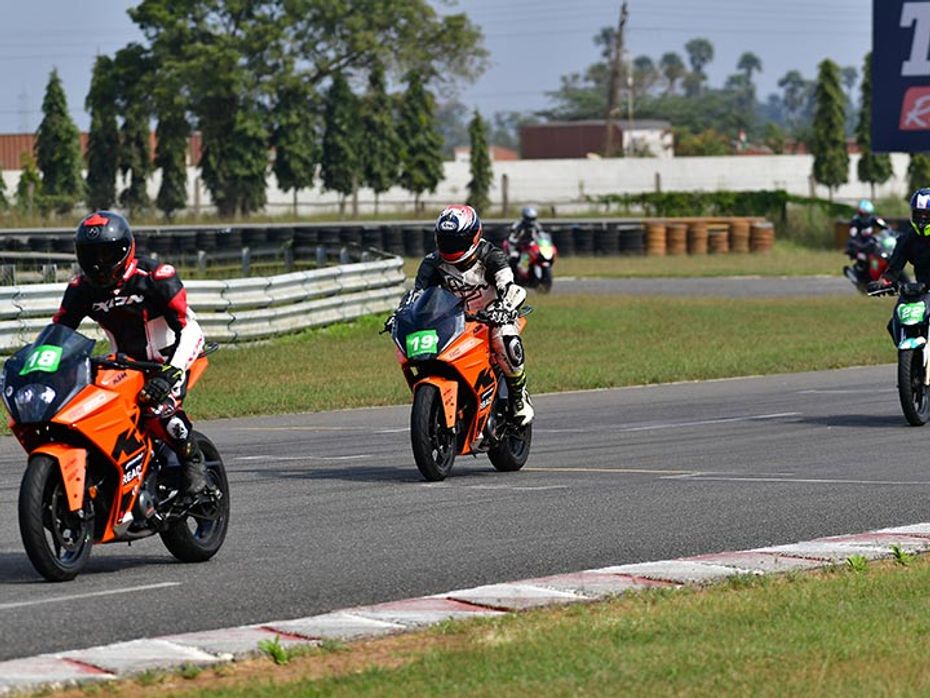
The third day of CSS was the most physically demanding. Here, the focus was fully on body position. Again, body positioning while cornering is something that I had worked out by myself in the past by watching a lot of riding videos and riding in the twisties. But when the whole process of body positioning was broken down into smaller drills, I realised just how excessively I was moving around from corner to corner, and how much I would upset the bike with each movement.
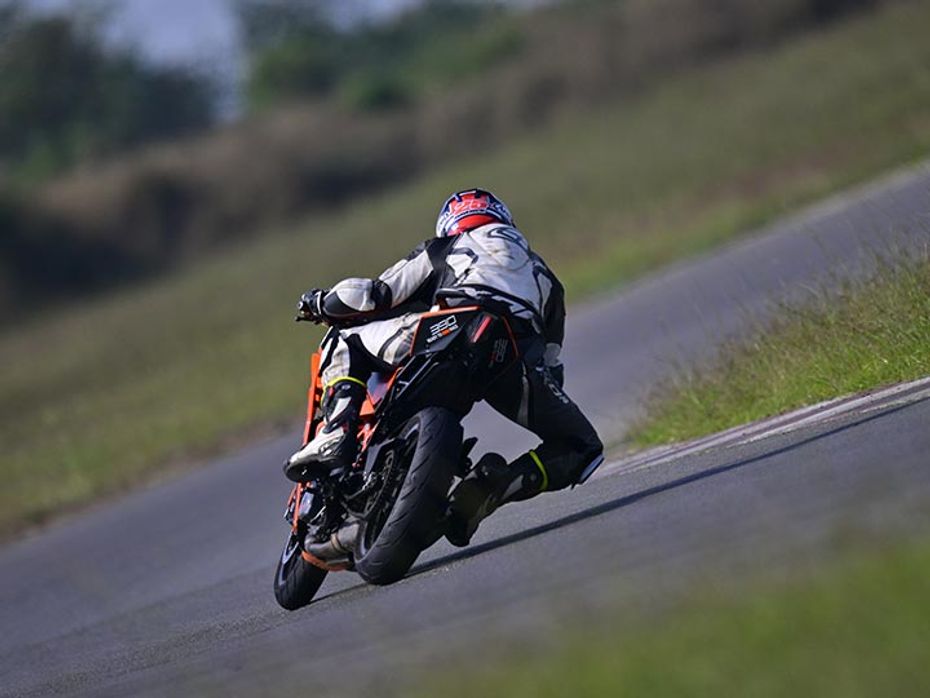
The basic body position drill started out with getting one butt cheek off the seat while you’re approaching the corner, but still holding the tank firmly with your knees as you start steering into the corner. Then as the bike leans into the corner, you drop your inside knee into the turn. And when you’re transitioning from corner-to-corner, you use the “Knee to Knee” drill. This means you get your inside knee back to the tank as you come out of the corner, shift your other butt cheek towards the next corner, start steering, and drop your inside knee into the other turn as the bike leans over. This might sound tedious when reading about it, but as you start practising this on the track, it begins to feel extremely natural and smooth.
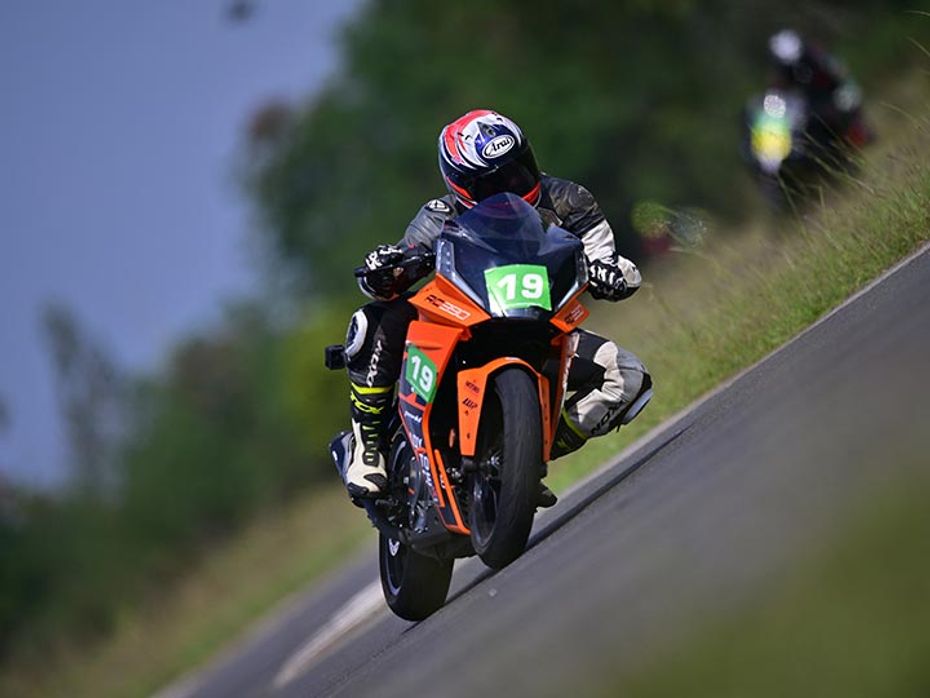
Other body position drills included the “Pick Up”, where you actively start picking up the bike coming out of the turn and “Hip Flick”, which when going from corner to corner, has your other butt cheek out towards the upcoming corner, even before you’ve fully picked the bike up from the first corner. When all these drills come together, you and the bike just flow from one turn to the next.
My biggest takeaway from Day 3 had to be the “Hook Turn” though, which allows riders to tighten their line around a corner by simply dropping their head and elbow further into the turn. It might sound bizarre, but it works like magic, as moving your weight towards the front of the bike compresses the front suspension, which in turn reduces the bike’s wheelbase and rake angle, making it turn tighter. It works like magic every time, and I’m certain this one technique alone has improved my riding by leaps and bounds.
I was lucky that our friends at Bajaj-KTM had loaned me one of their KTM RC390s for the CSS weekend. The RC390, in my opinion, is a perfect motorcycle to learn sport riding on, and especially around a race track like the Madras International Circuit, it is just incredible. But if you want to know just what makes the RC390 such a fantastic track machine, well, that’s a story for another day!

What makes the CSS so special is the amount of personalised attention and feedback you get from your track coach. My track coach for the weekend was TT Siddharth, son of business magnate and motorcycle aficionado TT Vardharajan, the man who brought CSS to India, and the only Indian CSS coach during our sessions. Not only was Siddharth sublime on the racetrack, sliding in behind me on the track to see how I was riding, and getting in front to show me the right things to do, his style of debriefing was just brilliant too! Never once did he directly tell me where I was going wrong on the track. Instead, he would make me think about what I did right and what I did wrong on the track, helping me come to my own conclusions, and correcting those conclusions when required. This system of debriefing was nothing short of incredible, as it made me constantly reevaluate what I was doing on the motorcycle, and correct it in the next track session. And when I did get things right, Siddharth was very encouraging in his praise as well. After each track session, I would hop off the bike and make a beeline for the debrief room to have a chat with Siddharth about the session. And to be told at the end of the school that I was one of the best students that weekend was an enormous confidence booster.
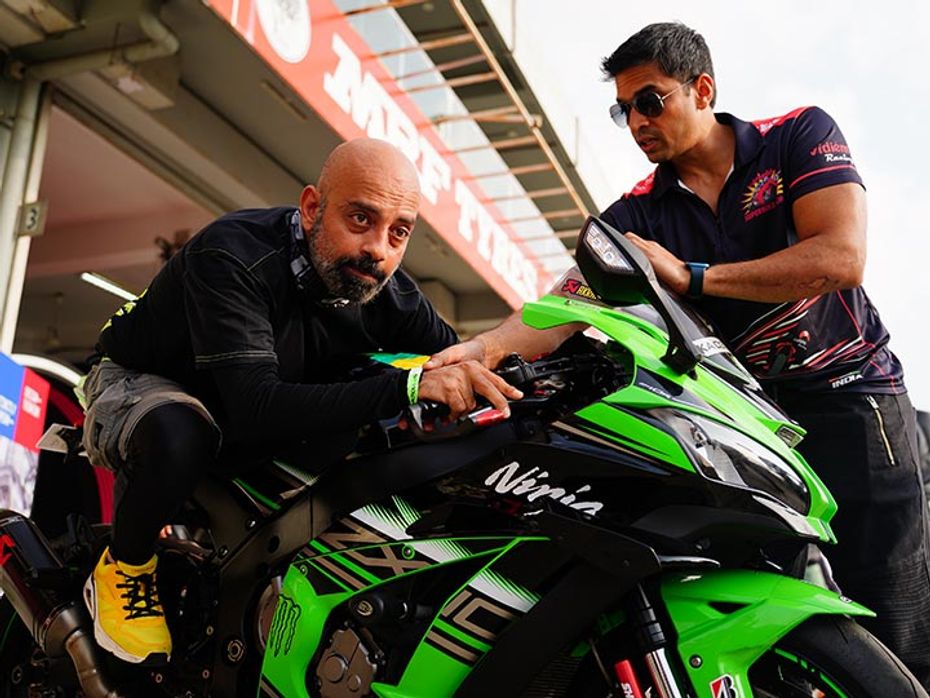
While each lesson might seem quite basic and simple, when you add everything you’ve learned over the three days together, you realise that the takeaways from CSS are greater than the sum of their parts. One common misconception is that CSS is all about track riding. But nothing could be further from the truth. The set of skills I learned, relearned and honed during Levels 1, 2 and 3 of the California Superbike School 2024 is something that has certainly made a big difference in the way I ride on the road as well. It has made me more confident while riding, regardless of the bike I’m on, and I think somewhere it has made me a safer rider as well. Honestly, for anyone thinking about improving their riding skills, I can think of no better way of doing it than enrolling for a weekend at the California Superbike School.
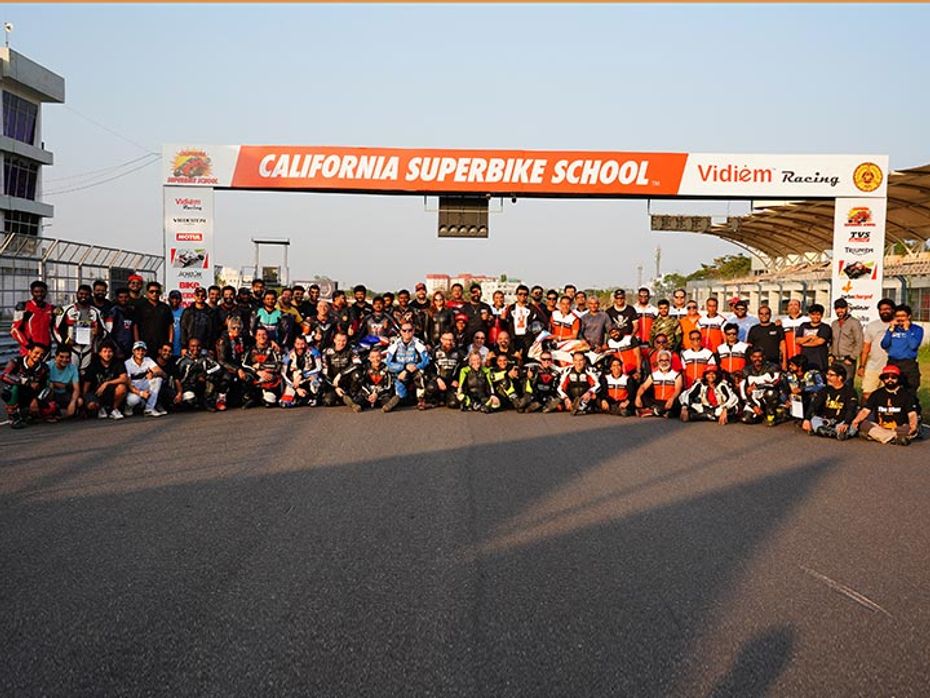


Ceat SportRad Tyres 5,000km Review, on KTM 390 Duke

Raida AirWave Motorcycle Riding Gloves Review

2024 KTM 390 Duke Road Test Review: Unleashing The Madness

2024 KTM 390 Duke First Ride Review - Best 390 Duke Ever!

2024 Yamaha R3 Road Test Review: A Costly Affair

Yamaha R3 First Ride Review: The Perfect Upgrade To An R15?

2022 KTM RC 390 vs TVS Apache RR 310 Touring Test Comparison Review:...
 KTM Duke 390
KTM Duke 390
 Yamaha R3
Yamaha R3
 Bajaj Dominar 400
Bajaj Dominar 400
 KTM RC 200
KTM RC 200
India's largest automotive community
 KTM Duke 390
Rs. 3.13 Lakh
KTM Duke 390
Rs. 3.13 Lakh
 KTM 200 Duke
Rs. 2.03 Lakh
KTM 200 Duke
Rs. 2.03 Lakh
 KTM 125 Duke
Rs. 1.81 Lakh
KTM 125 Duke
Rs. 1.81 Lakh
 KTM 250 Duke
Rs. 2.25 Lakh
KTM 250 Duke
Rs. 2.25 Lakh
 KTM RC 200
Rs. 2.17 Lakh
KTM RC 200
Rs. 2.17 Lakh